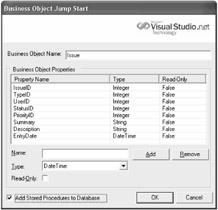Introduction
Application development is usually faced with several critical factors: time to market, ever-increasing quality, and cost of development. Time to market is critical in that any project that an individual or company may have in mind is probably already in the works elsewhere. When that is the case, everything comes down to being the first to deliver even if it falls short. A Gartner Research study showed that competing products offering similar features will take the most market share if released sooner. The study further added that the product released first, even with fewer features, typically builds market share faster. The lesson of that study is that it is important to release a 1.0 version of a new product concept as quickly as possible and then follow up with feature add-ons over time.
Product consistency and quality are also critical to the success of products making their debut. Applications with modules that look differently can undermine the application user 's confidence in the product. The lower their confidence in the application, the less they use the product and come to depend upon it. The same can be said at the code level. The more modules that are implemented consistently, the easier different developers can step in to investigate and resolve problems.
Cost of development is often measured by productivity, or how much code is created to accomplish specific application tasks . The best development platform for you to use will offer the most services related to your application. This has often been measured by the size of a platform's class library and its flexibility. Because the .NET Framework is rich with data access, presentation, communication, and networking services, it can save the enterprise developer a significant amount of time that would otherwise be required to build that foundation. In addition to providing a large resource library of functionality within the .NET Framework, Visual Studio .NET provides many time-saving tools. The integrated form and component designers save a lot of time when building Windows or Web forms. The IntelliSense feature saves time searching help files to obtain quick property and method information. Furthermore, the build manager makes configuring and building projects faster. Together, the .NET Framework and Visual Studio .NET significantly accelerates the time required to build complex business and enterprise applications.
Supporting Software Tools
The application development frameworks presented within this book place a lot of emphasis on business object classes. Chapter 2, "Accessing Data in ADO.NET," introduces business objects and explains their roles within the application framework. Although this is a scalable and flexible solution, there is one setback. It requires several C# code classes for each business object. In an effort to minimize that coding work, I have implemented an add-in for Visual Studio .NET 2003, called Business Object JumpStart.
After you download and install the Business Object JumpStart, you can seamlessly integrate it into Visual Studio. Just select Tools ˜ Business Object JumpStart from the Visual Studio menu and enter the attributes of your business object, as shown in Figure 1.

Figure 1: Adding business objects to your existing solution
After defining the new business object, click the OK button and take a break as the Business Object JumpStart adds a new class library project to your solution, creates all of the business object code in C#, and creates the database stored procedures that bind the business objects to the database. This handy tool trims a lot of mind-numbing coding from your development project and is based upon the examples within this book.
You can download the latest version of the Business Object JumpStart from the Downloads section of the Apress Web site ( http://www.apress.com ), or you can search the CNET Download.com Web site ( http://www.download.com ).
EAN: 2147483647
Pages: 119